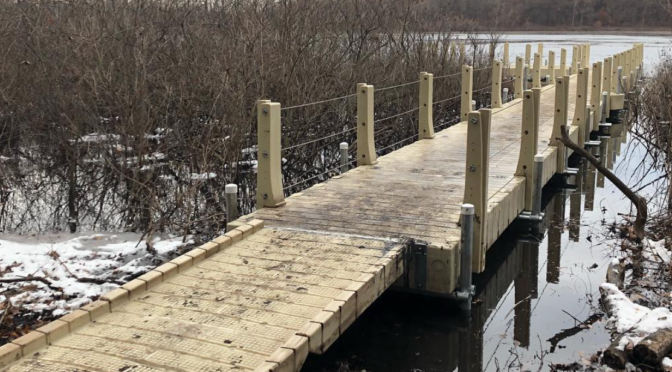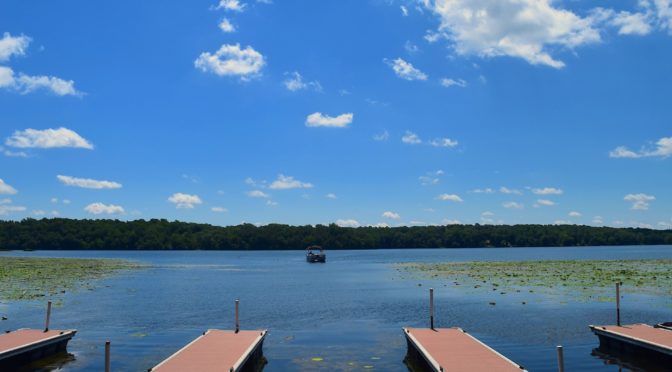Following the ADA guidelines for an accessible boardwalk is a crucial part of outdoor recreation. You need to help everyone enjoy the scenery by keeping your site up to code. Waterfront areas rely on ramps and floating walkways to make nature excursions possible for people of all abilities. Redesigning your access routes can make your park, camp, or school better than ever!
Accessible Boardwalk Requirements
Installing a floating walkway on your wetlands or boggy areas can be a great way to create a fun trail that still protects the environment. Pay attention to the key features of what makes your boardwalk accessible, and you’ll be doing your part to make the path safe for everyone.
1. Slopes and Surfaces
The natural terrain of your site will help determine where your ADA walkway should start and end. Considering the slope from land to an over-water boardwalk can be tricky, but the right team can make your new build a success. You’ll need to make sure that wheelchairs can easily move along the route. This is where slope angles (nothing over 1:20) come into play.
Another consideration for your recreation access route is for its surface material. It must be both firm and stable—there are no exceptions to this rule. However, slip resistance isn’t mandatory. You probably won’t be able to control the amount of debris on the walkway from leaves and dirt. As long as you can guarantee a steady surface, you should be in the clear for this first set of requirements.
2. Passing and Resting Spaces
As you design your floating walkway or accessible boardwalk with your dock builder, you’ll also need to pay attention to the number of resting spaces you place along the route. It’s important that people on your path have a chance to stop along the path and take in the scene.
Part of your ADA guidelines include measuring resting spaces that can comfortably fit a wheelchair (or strollers, for that matter) and allow people to turn around on the walkway. These areas on your boardwalk will also give individuals to opportunity to pass other parties, as everyone enjoys the trail at their own pace.
3. Walkway Openings
In order to keep water from collecting on the outdoor recreation access route, your path needs to have openings. Gaps or spaces between the planks that make up your boardwalk will let water drain. You just have to watch how big these openings are for safety.
When the spaces are too large, cane or crutch tips and small wheels can get stuck. The standard requirement is to have openings measure half an inch or less. Of course, there are some exceptions for certain boardwalks. Consulting with your team of dock builders can help you determine the right layout for your site. Environmentally sensitive areas may also require different openings for drainage, so you’ll need to update your designs appropriately.
Build Your Floating Walkway with Deaton’s
If you’re ready to move forward with a new ADA boardwalk or floating walkway, the crew at Deaton’s Waterfront Services can help. We’ve worked with a variety of outdoor recreation sites and we’re always happy to design paths with ADA guidelines in mind. It’s part of our expertise!
We regularly use EZ Dock walkways for wetland sites and other waterfront areas. To learn more about these floating dock walkways, please don’t hesitate to reach out. We can collaborate on the right design for your area’s terrain and make plans to keep your entire boardwalk up to code. When you need accessible features in your park, we’re here to help. Contact us for a quote at (317) 747-4933.


